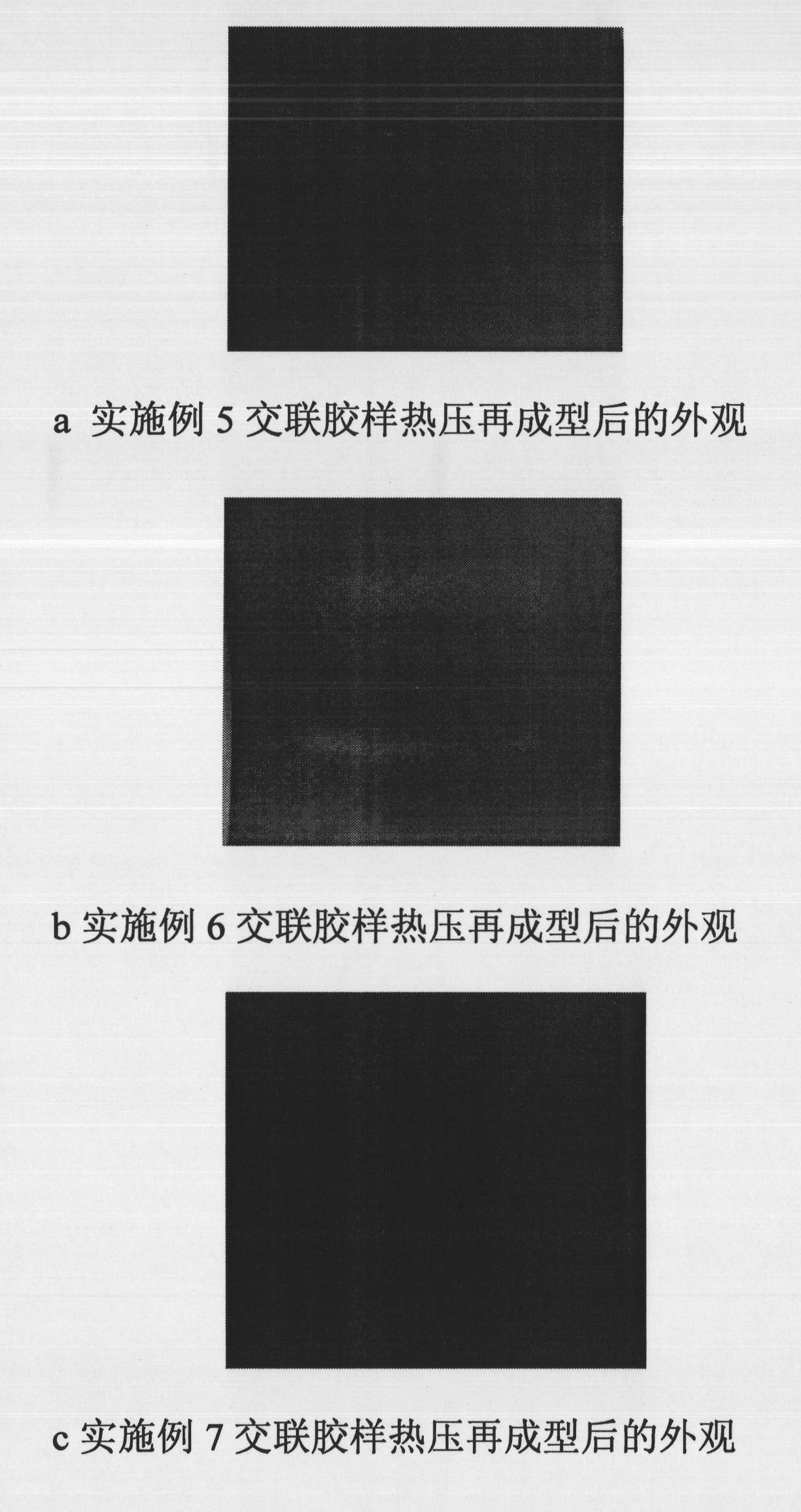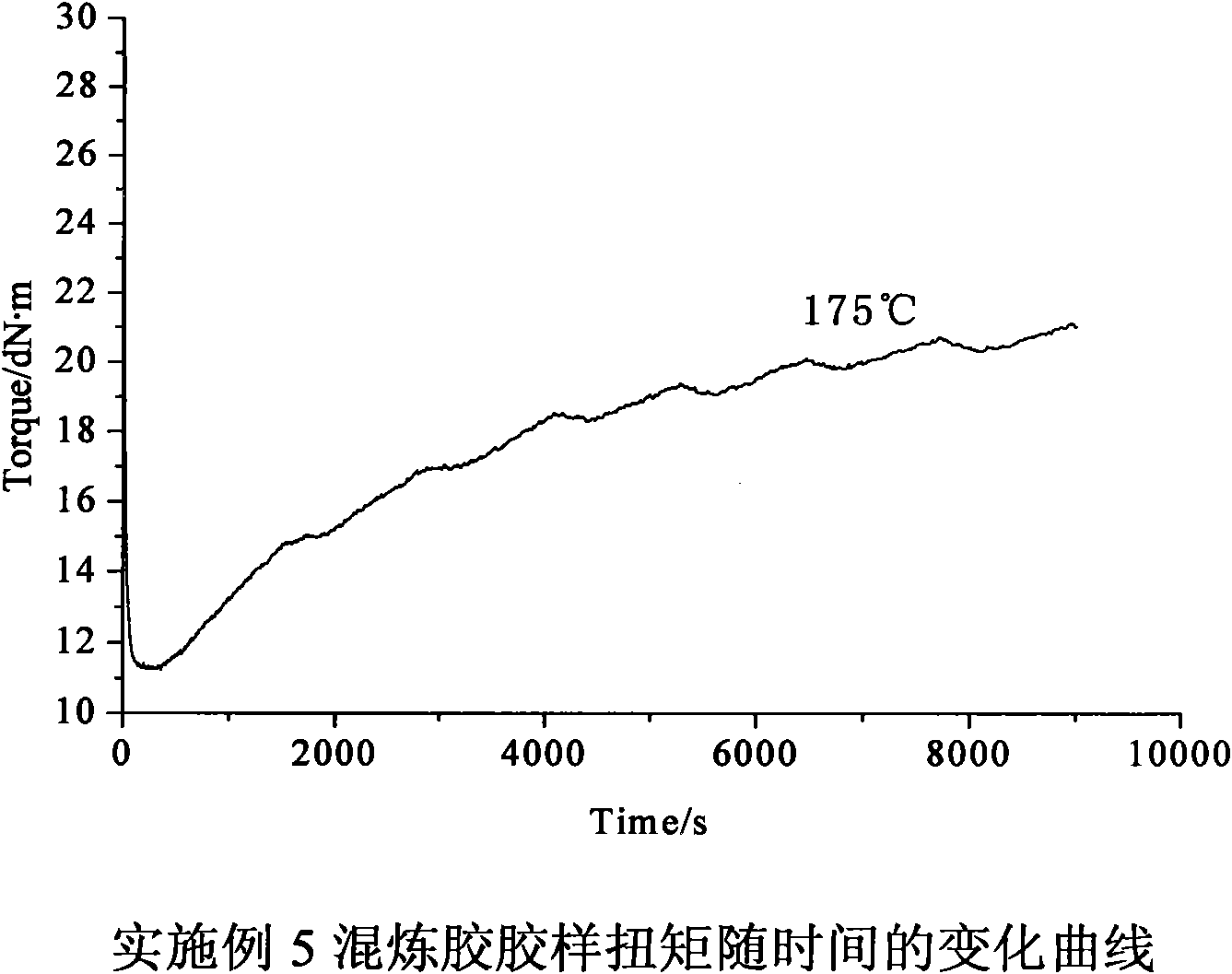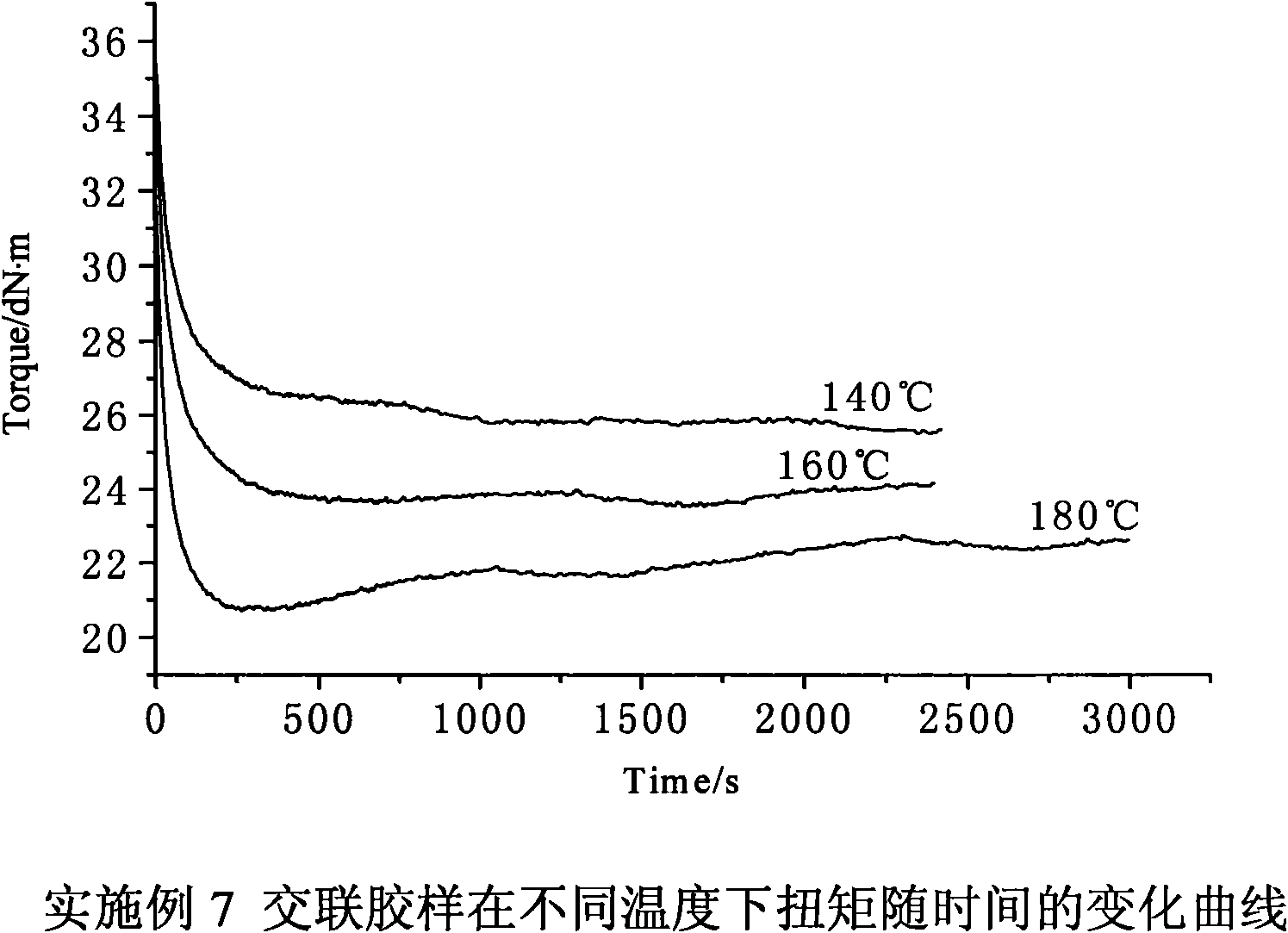Method for preparing thermo-plastically reprocessed cross-linked halogenated butyl rubber
A technology of halogenated butyl rubber and cross-linked rubber, used in the preparation of carboxylate, organic chemistry, etc.
- Summary
- Abstract
- Description
- Claims
- Application Information
AI Technical Summary
Problems solved by technology
Method used
Image
Examples
Embodiment 1
[0074] 100g deionized water, 0.83g sodium dodecyl sulfate (SDS), 0.27g NaHCO 3 Add it into the reactor and heat until completely dissolved, then add 5g of octyl acrylate (OA) to pre-emulsify for 20 minutes to obtain a pre-emulsion. After the temperature rises to 75°C, add 20 mL of an aqueous solution containing 0.05 g of potassium persulfate (KPS), and add dropwise 20 mL of an aqueous solution containing 0.15 g of KPS, 10.51 g of 4-vinylpyridine, and 9.74 g of octyl acrylate. The monomer mixture composed of 2.56 g of butyl acrylate was controlled to add the monomer for 3 hours. After the monomer was added, the reaction was continued for 8 hours, and the mixture was cooled and discharged to obtain a milky white emulsion. The solid content of the emulsion is 20%, and the monomer conversion rate is about 90%.
[0075] The resulting emulsion was demulsified with a 2% NaCl solution to obtain a polymer containing pyridine side groups. The polymer was soaked in an aqueous NaOH solut...
Embodiment 2
[0077] With 500g deionized water, 5.36g sodium dodecylsulfonate (SDS), 0.54gNaHCO 3 Add it into the reactor until it completely dissolves. After the temperature is raised to 70°C and stabilizes, add 6.00 g of a mixture of styrene and divinylbenzene (DVB) (99% styrene, 1% DVB) for pre-emulsification for 20 minutes to obtain a pre-emulsion. Add 25mL of aqueous solution containing 0.54g of ammonium persulfate (APS) was pre-polymerized, and after the blue light appeared in the system, 34.00g of mixed monomers of styrene and divinylbenzene (styrene 99%, DVB1%) were added dropwise, and the dropping time was 4h . After adding the mixed monomers of styrene and divinylbenzene, react for 6 hours, then add 13.60 g of mixed monomers of styrene and 4-vinylpyridine (4-VP15%, styrene 85%) dropwise, and continue the reaction After 16 hours, a translucent white emulsion with blue light was obtained. The solid content of the emulsion is 10%, and the monomer conversion rate is 96%.
[0078] A...
Embodiment 3
[0080] Add 27.78g of sodium sand into 442.52g of anhydrous tetrahydrofuran, and gradually add 59.57g of cyclopentadiene (CPD) under the conditions of ice-water bath cooling and magnetic stirring, and react for 24h. The obtained cyclopentadiene sodium solution was mixed with excess dry ice, reacted for 6 hours to obtain dicyclopentadiene sodium dicarboxylate slurry, and then the solvent was removed by suction filtration and dried under reduced pressure at 60°C to constant weight to obtain dicyclopentadiene dicarboxylate slurry. Sodium formate crosslinker [DCPD(COONa) 2 ] 85.78 g.
PUM
 Login to View More
Login to View More Abstract
Description
Claims
Application Information
 Login to View More
Login to View More - R&D
- Intellectual Property
- Life Sciences
- Materials
- Tech Scout
- Unparalleled Data Quality
- Higher Quality Content
- 60% Fewer Hallucinations
Browse by: Latest US Patents, China's latest patents, Technical Efficacy Thesaurus, Application Domain, Technology Topic, Popular Technical Reports.
© 2025 PatSnap. All rights reserved.Legal|Privacy policy|Modern Slavery Act Transparency Statement|Sitemap|About US| Contact US: help@patsnap.com



